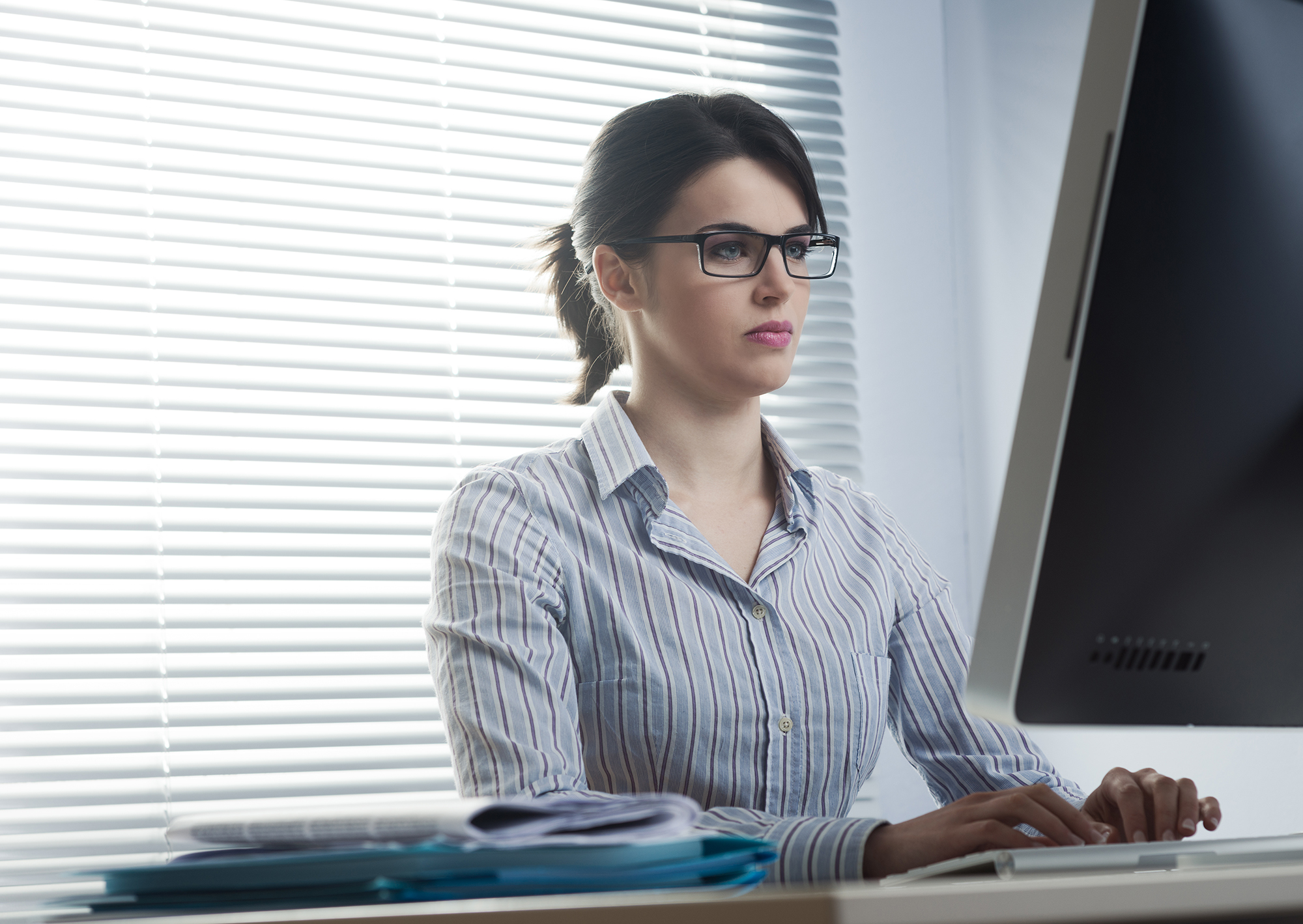Are You Suffering from Screen Exhaustion?

If your eyes are growing itchy and tired during the workday, you might be experiencing screen exhaustion.
If you’re also having headaches, neck pain and difficulty sleeping, it’s likely that you’re suffering from this malady. And if the mere sight of your laptop causes stress, you definitely have it.
So what is screen exhaustion, anyway?
“Fatigue occurs when the muscles around the eyes are strained due to prolonged exposure to screens,” says tech writer Lando Loic in this blogpost for the website MakeUseOf. “[Y]our eyes constantly have to contract to focus and re-focus on the tiny pixels that make up the texts or images on your screen. Other contributing factors include reduced eye blinking, blue light, and glare. Symptoms include tired eyes, difficulty sleeping, headache, eye-watering, inability to focus, heightened light sensitivity, and blurred vision.”
But digital screens have been around for awhile, you say. Why am I suffering now?
“[Y]ou are probably experiencing screen fatigue more because of a combination of the ‘always-on’ work culture and the pandemic-induced work-life imbalance that pressures you into working around the clock, plus all the virtual socializing, and entertainment,” says Loic.
Read “The Five Best Ways to Deal With Screen Time Exhaustion.”
Have you checked out Lawyers Mutual Consulting & Services? Founded by Camille Stell, who also serves as president, LMCS is a subsidiary of Lawyers Mutual. Its mission is to help firms build a modern law practice. It does that by offering expert advice and assistance into law firm trends and best practices. Camille and LMCS helps lawyers and firms create strategic plans and succession plans. A popular speaker and writer, Camille loves to guide lawyers through succession planning and into Life after Law. Contact her today.
Tips for Avoiding Screen Exhaustion
Here are Loic’s five best practices for warding off screen exhaustion (the quotes are from his article):
- Set work-life boundaries. “For many, the absence of the routine of commuting home from the office (that used to mark an end to the workday) makes them feel like they are still on the clock. To solve this, create a new ritual that would mark the end of your work hours. For example, setting yourself as away on Slackor other apps you use for work, shutting down your work laptop, going out for a walk, or a workout, etc.”
- Follow the 20-20-20 rule. “Set your alarm to work for 20 minutes during your work hours, and take a 20-second break to look at something 20 feet away from you. You can stand and walk to a window to look at anything like trees or cars. You could also use the time to stretch and drink some water. This allows your eyes to rest.”
- Adjust screen brightness. “Limit the amount of glare. Your eyes need to work harder when your screen is significantly brighter than your surroundings. You can also schedule the built-in blue light filter on your smartphone or computer to protect your eyes. This setting is called Night Shift on Apple devices, and Night Light on Windows PCs and Android phones. You can also try activating dark mode on your devices.”
- Buy a new monitor. “Some of these new monitors are packed with features designed to reduce blue light exposure and glare. Get a monitor with minimal display flickering, a high refresh rate, and an anti-glare panel if possible.”
- Change your posture. “When your face is too close to your screen, you are likely to blink less, leading to dry, sore, or strained eyes. Exposure to the light from your screen can also damage your vision. On the other hand, sitting too far from your screen will lead to more strain on your eyes and neck as you try to read more clearly. The recommended distance that should separate your face from your monitor ranges between 20-40 inches. You do not have to get a tape to measure that distance each time you want to work. All you need to do is sit straight in your chair, hold your arms out in front of you, and position your screen an arm’s length away.”
Source: MakeUseOf
Lawyers Mutual can help you navigate the new normal. Our email newsletter “Practice Reimagined” offers timely tips, pointers and valuable links on wellness, work-life balance and quality of life – delivered straight to your in-box. Lawyers helping lawyers. It’s what we’ve been doing more than 40 years.




